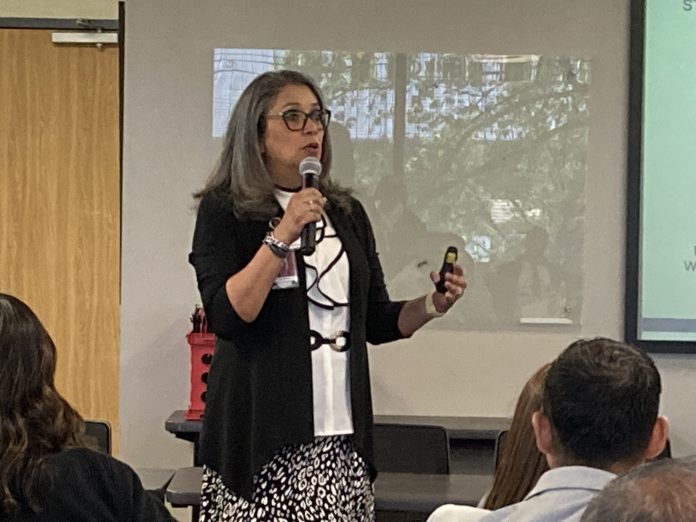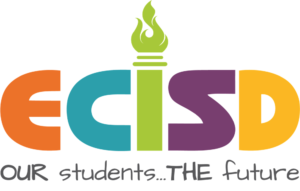
The National Student Support Accelerator is working with Stanford University to see how well artificial intelligence works with high-dose tutoring.
Ector County ISD is the guinea pig for the project.
The purpose of the National Student Support Accelerator is to provide wider access to high-impact tutoring and other resources that will help students accelerate through their learning journeys, Associate Superintendent of Curriculum and Instruction Lilia Nanez said.
ECISD has been using Air Tutors and FEV Tutors for about three years. It began after the effects of COVID on student learning were revealed. About 3,000 students are currently being provided with high-dose tutoring.
FEV is now trying out an artificial intelligence feature that gives tutors different options on how to respond to student difficulties.
“This research actually started out at Brown University, and then that researcher transferred from Brown University to Stanford. It’s pretty exciting to work with this group of individuals,” Nanez said. “They decided to partner up with FEV who is our multi-year partner, one of the two big ones that we use for high-impact tutoring. What the AI tutor co-pilot is, is that the Stanford University group of researchers, they’ve been working on what they call a large language model. What this large language model does is it collects the words, the conceptual understanding that in this case, mathematicians are adding to this language that collects the samples of language. Math teachers and math experts put in language concepts, explanations of concepts into this large language model that is then producing questions that the tutors can use to help students understand their mistakes, so that’s what AI does,” Nanez said.
“The technology has algorithms that take all the language that has been inputted into this computer system, and then it generates all these ways to respond. It happens (in) real time so our kids will not know that their tutor is being assisted by an AI,” she added.
With FEV, there is a chat feature that offers different ways for the tutors to respond. If the tutor doesn’t like what AI comes up with, they can click a button and it will generate another question.
“This is really helping the tutors provide more explicit feedback to the students, whether it be through questions explaining the concept or just correcting the mistake. What’s exciting about ECISD working with FEV and the Stanford group is that we’re the only school district in the nation that Stanford is engaging (with) in this research,” Nanez said.

“I love the reason why. Stanford created this PowerPoint that we’ve been identified as a top performing high-impact tutoring district nationally. That’s why they wanted to make sure that FEV and that ECISD was involved in this research because our implementation of high-impact tutoring has been proven to be very successful,” Nanez said.
The researchers actually have two questions — how do the tutors use the AI tutor co-pilot and how does the AI tutor co-pilot affect student engagement and academic growth? “We will have the results of all of this when we take our final spring MAP (Measures of Academic Progress) assessment. We have a randomized control group,” Nanez said.
One group of students has live tutors and one has the co-pilot.
“The control group just has the live tutors as they’ve been working with us for the last two and a half years. The treatment group is the one that has the tutors that are leveraging the AI co-pilot,” she added.
With the randomized control trial, they are randomly assigning tutors to use the artificial intelligence.
“We don’t have control over it. They’re not making any decisions like this tutor has been tutoring for three years. We know they’ve got a proven track record. They’re just randomly assigning tutors to use this AI and it’s supposed to make the tutors more effective,” Nanez said.
The high-dose tutoring has been funded by Elementary and Secondary School Emergency Relief, or ESSER, funds, that will go away after this year.
“We’re all very concerned about that, especially since we have not received any additional funding from the state since 2019. We know that our high-impact tutoring has worked, and it has been part of our strategic plan,” Nanez said.
“We are revamping our strategic our strategic plan and we’re going to have a new one for the start of the academic year. But the Strategic Plan Project Management Oversight Committee (has) determined that tutoring has to continue, because this is something that has been proven to be successful and it has been a key part of how we have helped our students close the (academic) gaps … We’re going to continue tutoring. It probably will not be at the scale that we’re doing it now because of ESSER, but we will carefully identify the kids that we know will benefit and we will continue this,” Nanez said.
She noted that it is hard to find enough human tutors to go around.
When high-dose tutoring began, it was perfect timing because ECISD was short of teaching staff and teachers were overwhelmed by larger classes and the academic gaps COVID caused.
“We wanted our teachers to focus on tier one instruction, on just implementing and providing quality instruction during the school day. This virtual high-impact tutoring removed that heavy lift from what our classroom teachers were having to do, because not only did they have to really analyze data, figure out what the student gaps are, plan for the day and then plan for additional hour at the end of the day when everyone is exhausted. We have built our tutoring within the academic year and within our instructional frameworks for reading and math, so when it’s done correctly, it’s done during the day,” Nanez said.
The tutoring has helped bring ECISD closer to state scores in reading and math and they have seen growth.
“We’re growing faster than the state is, so we anticipate in a year or two that we will be exceeding the state average, but you still want to keep going with it because you don’t want to lose that momentum,” Nanez said.
House Bill 1416 included requirements for Accelerated Learning.
“That’s really our framework for providing the virtual high-impact tutoring for the kids. That’s why we’ve had it at such a large scale because of House Bill 1416 and because we’re in the middle of the biennium, that House Bill will still be in effect in school year ’24-25. But the ESSER funding is gone, so it leaves us in a very difficult position. If the House bill requires kids who did not hit the certain expectation on STAAR, but yet we don’t have funding. How are we going to do this? So we all agreed that we will continue high-impact tutoring. The question is how many kids will we be able to afford to do this for,” Nanez said.



